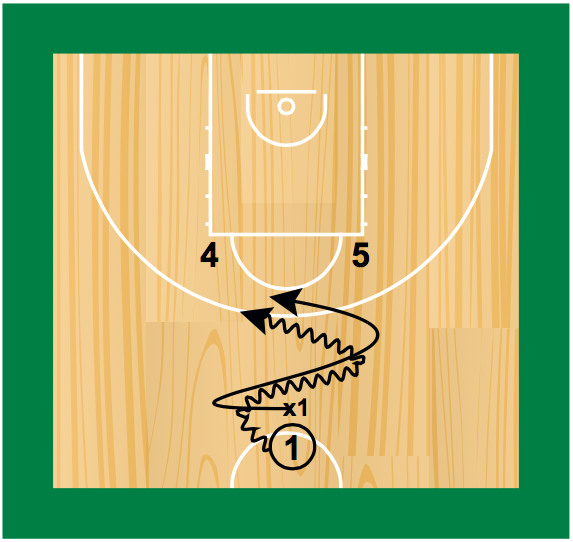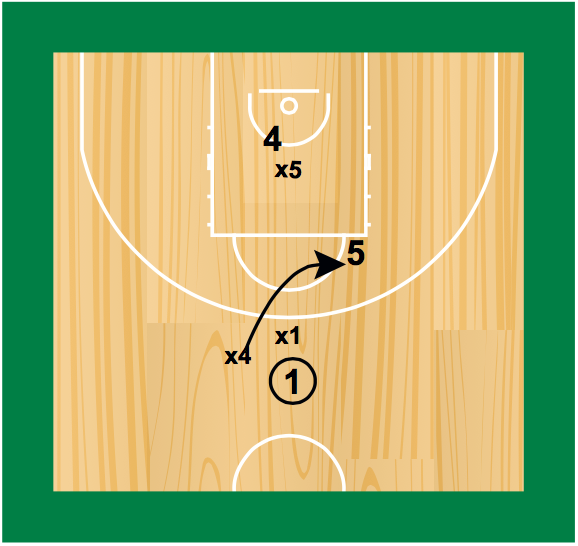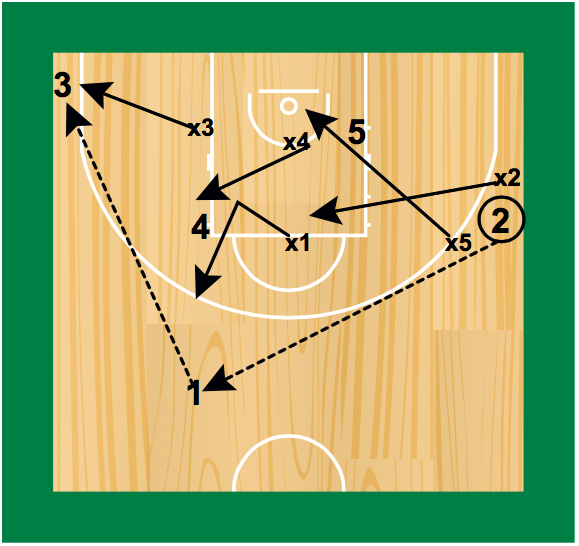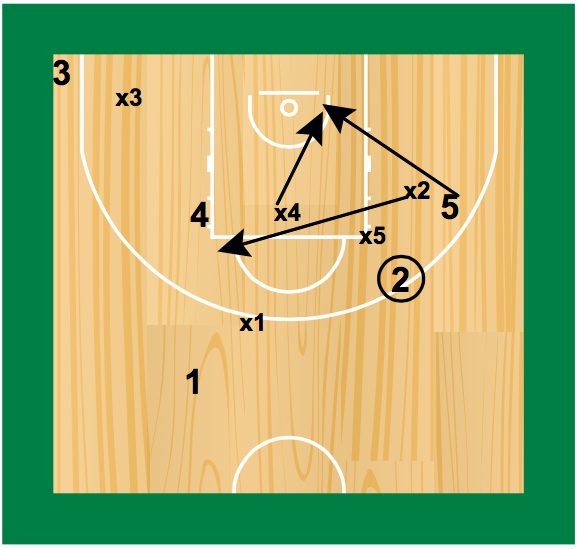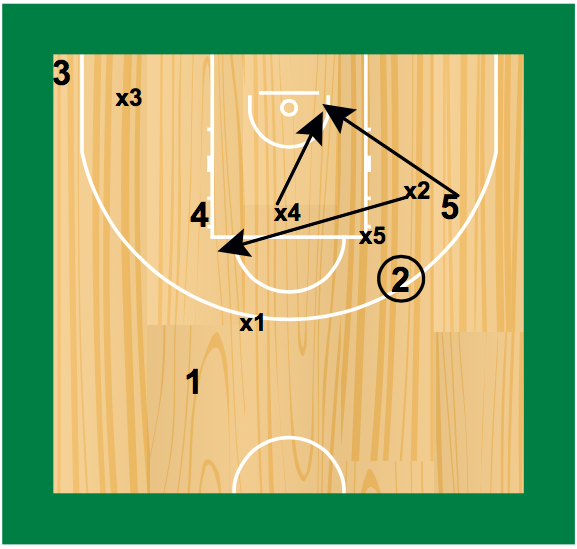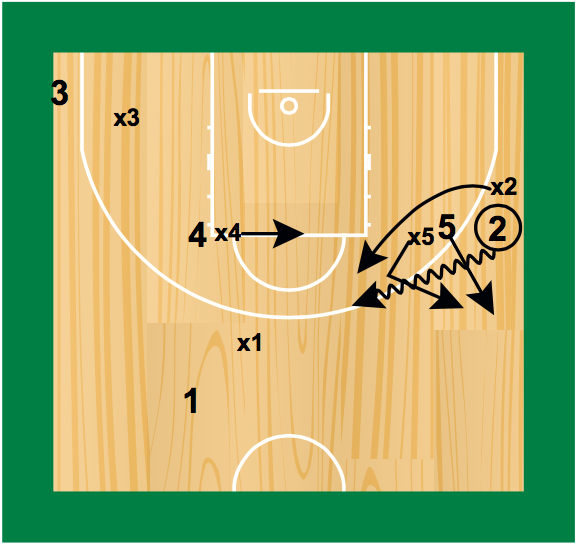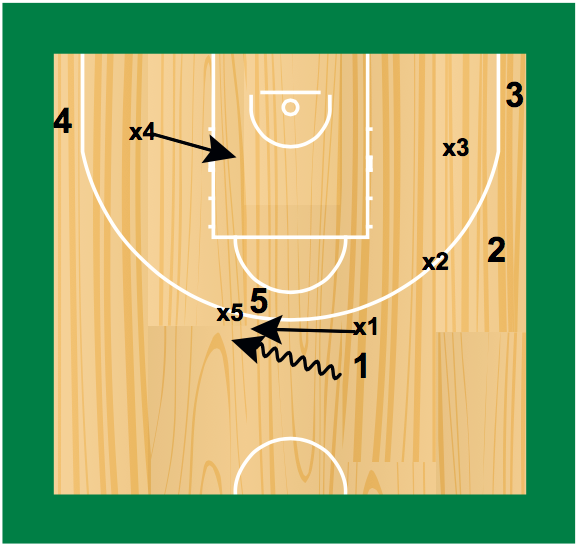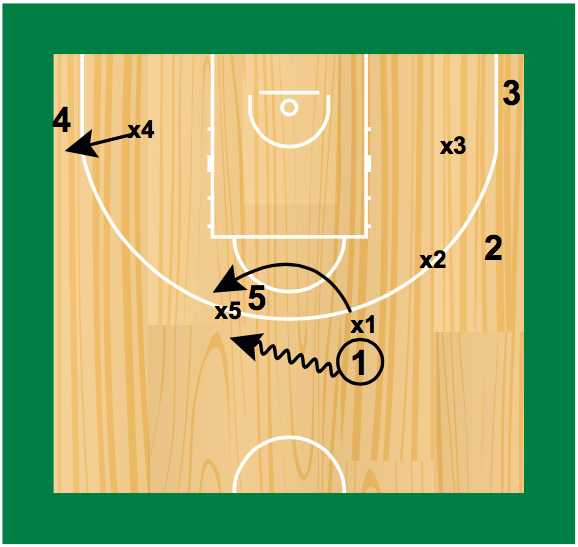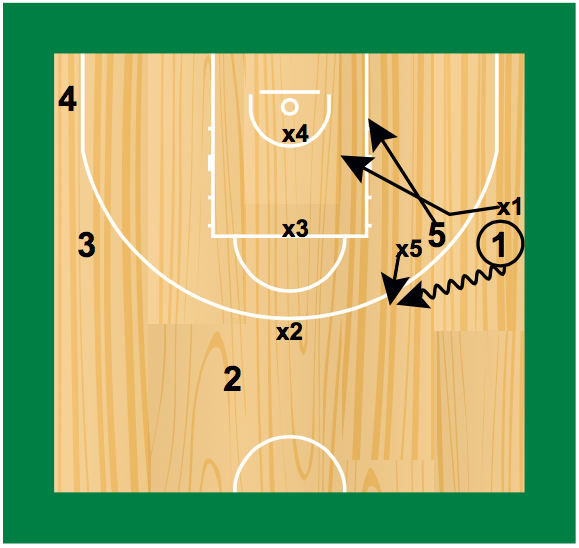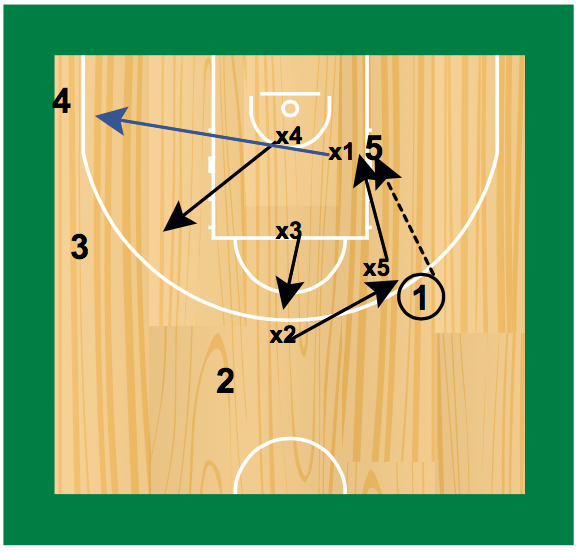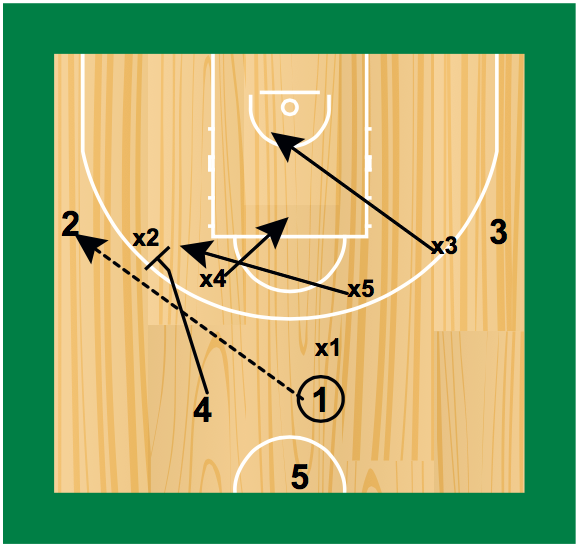Level 3
1.2.2 Having multiple defences against on ball screens
Parts of this article are drawn from an article by Dusko Ivanovic, which appeared in the 9th edition of FIBA Assist.
As a general rule in order defending the “pick and roll” requires:
- Players to have good court vision, so that they are aware of where all offensive and defensive players are positioned;
- Being aggressive and decisive, often the success of the defence depends less upon the particular tactic used and more upon how well the players work in unison to force the offence to react;
- Good timing and efficient movement.
There are many ways to defend the “pick and roll” and successful teams will often defend situations differently based upon (a) where on the court it occurs, (b) the particular offensive players involved and their strengths and (c) any limitations of their own players.
Here we describe a defensive scheme that incorporates a range of different techniques for defending the pick and roll. It is not suggested that coaches implement this specific defensive scheme, rather it is included to show the level of detail that a coach may wish to include in devising their own defensive scheme.
Defending “Horns”
“Horns” or an “A-Set” is a common offensive tactic, which places two high post places at the elbow (or elbow extended) who set screens for the dribbler.
In this scheme, do not force the dribbler any particular way. Instead, the ball defender is aggressive and forces the dribbler to change direction at least once (and better twice) prior to them using either screen.
To prevent the dribbler using the screen that they wish to (e.g. they may be particularly effective moving to their left). In this situation the defender (x4) must step “vertically” from the screen so that the dribbler cannot move in that direction.
The screen defender keeps contact with the screener. This will usually force the screener (4) to cut to the basket, and they are defended by the other post player (x5). This may leave 5 open at the elbow, however that is preferable to 4 getting open at the basket.
Defending Side Pick and Roll
Often teams will play a “side pick and roll” while also having a high post. This may occur in “Horns”, when the ball is passed to the high post, who passes back to the perimeter and follows their pass to screen.
The ball defender (x2) moves to force the ball handler in the direction of the screen. They must stop the ball handler from dribbling away from the screen (baseline).
The screen defender moves “vertically” to pressure the dribbler.
The other defenders sag into the key. In particular, the high post defender moves to the “low split” and is ready to defend the screener if they cut to the basket. x1 rotates down to help pressure the high post and x3 also sags into the key.
If 4 cuts to the basket (after x2 switches), x3 will step into the key to defend 4 and x2 moves to defend 3 on the perimeter. Again, avoiding having a guard defend in the post area.
If the screen defender is unable to contain a ball handler, x2 and x5 do not switch and x2 will usually go under.
If the ball-handler is a good perimeter shooter, x2 will go over the screen.
Again, here x4 rotates to defend 5 as they cut to the basket, and x2 rotates onto the high post player, while x5 contains 2.
If 1 is not a good perimeter shooter, x1 will go under the screen. However, here x4 must stay on the perimeter to defend 4.
If the low post player (5) gets the ball, the defenders trap, with x5 following the pass.
x2 rotates to defend 1, x3 rotates to defend 2 and x4 initially defends both players on the weakside. Once x5 has established a good defensive position in the low post, x1 releases to defend 4.
Defending the Trailer
It is common for the “trailer” to set a screen for the player at the wing that has the ball.
